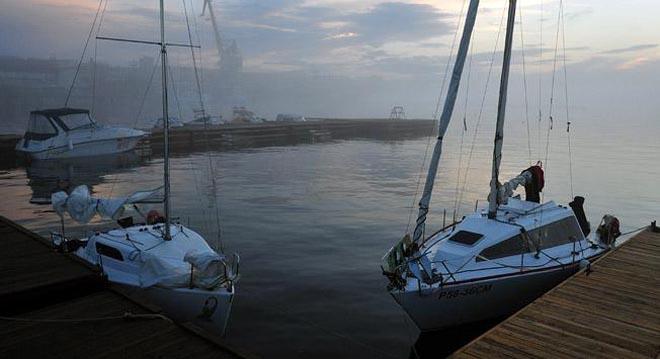Destination- From Moscow Sea to the White Sea
by Ivan Dementievsky, RBTH/Sail-World on 24 Mar 2014

In the Moscow Sea Ivan Dementievsky
I realized there is no Cote d’Azur with sandy beaches and emerald water in my country Russia. However, I had a strong tailwind, the northern sky and a crew that turned this trip into one of the best adventures of my life.
The Ivankovo Reservoir, the so-called Moscow Sea, with an area of 32,000, is located to the north of the capital. As spring sets in, local sailors come to its shores. This is an excellent place for the training of beginners – but one should go North to find real adventure, the fabled White Sea.
If you look at the map of the western part of Russia the uninformed would not even imagine where you can go starting from the Moscow Sea – there are only small rivers and lakes mixed up with marshes everywhere. However, if you take a closer look, you will notice that there are locks between the rivers, through which a yacht from Moscow can sail to the White Sea in the Arctic Circle.
Our route ran through Moscow – Tver – Kimry – Rybinsk – Rybinsk Reservoir – Cherepovets – Kubenskoye Lake – Beloye Lake (Kirillo-Belozersky Museum Reserve is on its shores) – Onega Lake – Petrozavodsk - Baltic Canal - White Sea.
Having planned the route, well known to local yachters, we made several 'sorties' along the way away our main line. For example, we visited Beloye Lake, on the shores of which the impregnable walls of the Kirillo-Belozersky Monastery are located.
In the evening our yachts hover silently above the lake’s mirror. When the wind dies down and the sun is about to touch the horizon of the water surface – this is a beautiful and amazing view. Beloye Lake is a great place to stop, you can spend the night here, visit the museum in the morning, and take a walk around the monastery (which is a cultural heritage site of Russia).
Passing through the locks also proved to be an interesting experience. According to the rules, the priority in passing the locks is given to ships with passengers, then to tankers and dry cargo carriers, and only then to us in micro-class, the yachts. If you are lucky enough, you can 'slip' through the lock within half an hour, if not – you can wait an entire day, and you can never tell in advance. That is why you should plan your yachting voyage with ample reserve of time.
Where a network of small rivers finally flows into the huge Onega Lake, a new stage of the journey begins. You can feel a different wave and a different wind immediately: the coastline goes beyond the horizon at once, and soon it may seem to you that the yacht is lost somewhere in the vast expanses of the ocean.
You should carefully navigate on such large bodies of water, and keep an eye on the weather conditions, as squally winds can turn the quiet Onega into a pot of furiously raging waves within half an hour. It is advisable not to lose sight of the coastline.
It is hard to get used to the Onega, it is never the same – you may be forcing your way through a wall of rain for an entire day, but the sun will set in calm water in the evening – and that is the charm. Soon the moorings of Petrozavodsk can be seen in the distance. The old harbour has known better days, and could have been forgotten, but for the yachts that must have a place to be moored.
Some crew will get off here to go home by train, while we will stay for another week to catch the wind in our sails, for it's time to transit the Baltic Canal and the next stop is the White Sea.
If you want to link to this article then please use this URL: www.sail-world.com/120371